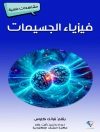Marie Curie’s groundbreaking book, ‘Radio-Active Substances’, delves into the mysterious world of radioactivity with meticulous detail. Published in 1904, this book not only presents Curie’s meticulous research but also serves as a pivotal moment in scientific history, as it marks the discovery of radium and polonium. Curie’s writing style is clear and precise, making complex scientific concepts accessible to readers of all backgrounds. The book provides a comprehensive overview of the properties and behaviors of radio-active substances, laying the foundation for further scientific exploration in the field. Curie’s work also sheds light on the ethical implications of harnessing radioactive materials. Overall, ‘Radio-Active Substances’ is a significant contribution to the scientific community and remains a seminal text in the study of radioactivity. Marie Curie’s dedication to scientific discovery and her pioneering research in the field of radioactivity make her a revered figure in the history of science. Her persistent efforts and groundbreaking discoveries have paved the way for countless advancements in the field of chemistry and physics. ‘Radio-Active Substances’ stands as a testament to Curie’s brilliance and serves as essential reading for anyone interested in the history of science or the study of radioactivity.
Про автора
Marie Curie (1867–1934) stands as a towering figure in the annals of science and history, recognized for her groundbreaking work in radioactivity—a term she coined. A pioneering Polish-born physicist and chemist, she became the first woman to win a Nobel Prize and remains the only person to have won Nobel Prizes in two different scientific disciplines: Physics in 1903 (shared with her husband Pierre Curie and Henri Becquerel) and Chemistry in 1911 for her services to the advancement of chemistry by the discovery of the elements radium and polonium, named after her native land. Curie’s seminal work, ‘Radio-Active Substances’ (1904), which was her doctoral thesis, delved into the properties and compounds of the newfound element radium. It held critical importance in the evolving field of atomic physics and underlined the meticulous scientific methodology that characterized all of Curie’s research. Her contributions to the understanding of radioactive elements laid the foundation for the new field of atomic physics. Her profound legacy in the trajectory of science is marked by her namesake units of radioactivity and multiple scientific institutions, manifesting her lasting influence. Throughout her life, Curie’s resilience against a male-dominated academic world and her humanitarian efforts using radiology during World War I exemplified her exceptionality in both intellectual foresight and human compassion.












